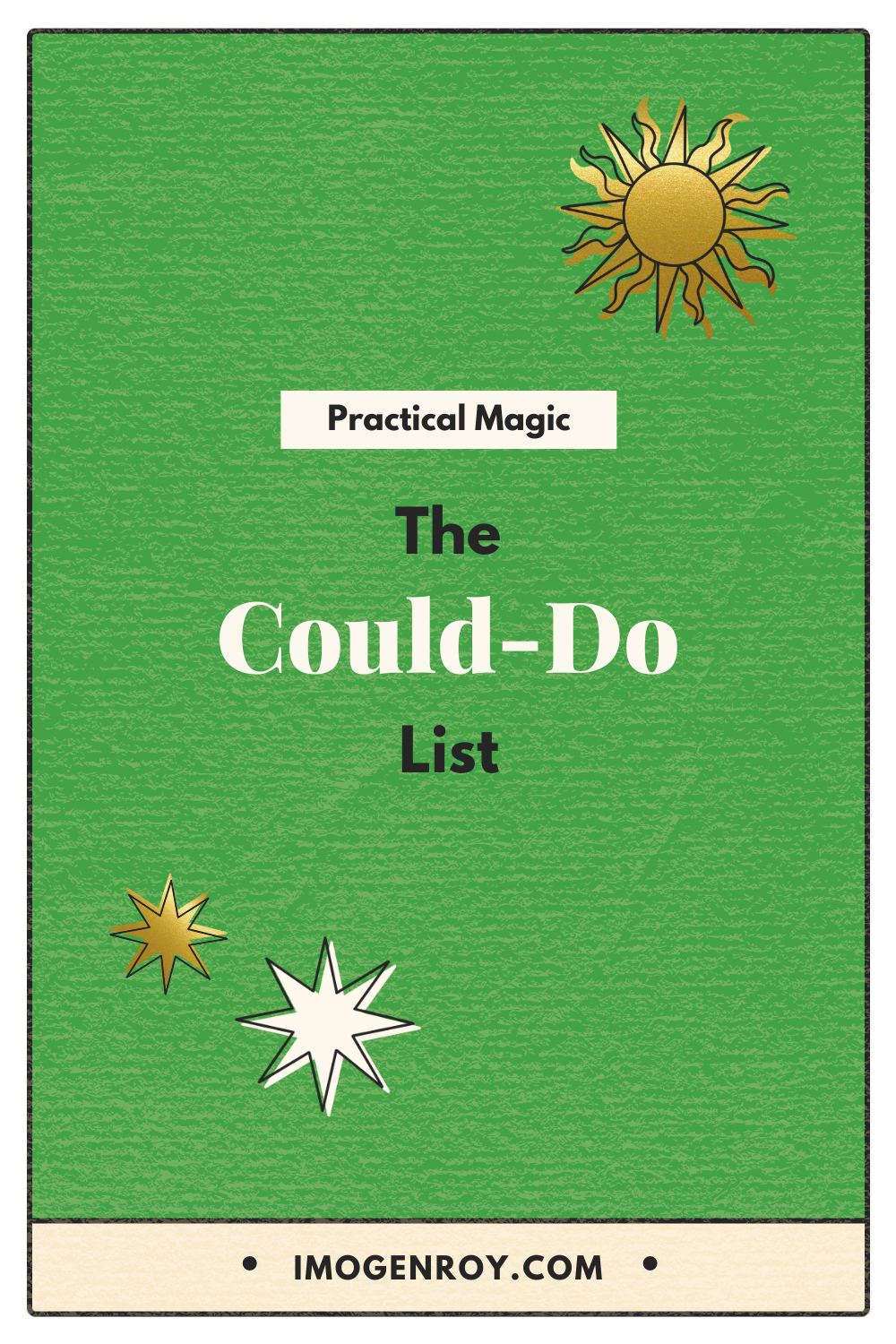Practical Magic | The Could-Do List
We are cyclical beings with inconsistent moods and energy – not all time is created equal. This is why we need non-linear tools and strategies to stay organised and productive.
Enter: The Could-Do List.
It's an alternative to the To-Do List that supports you to practice the concept of "right timing" so you can stay in your flow – no matter how inconsistent your mood is.
The Could-Do List
In Episode 10, I introduced you to the concept of expansion and contraction, the universal law that governs our world and all living things. When we embrace the idea of cyclical living and the fact that we can use every energetic state to serve us, we can unlock a level of magical living that cannot be underestimated. It is truly the cyclical living superpower.
In this episode, I’m introducing you to a practical tool that you can use to start to harness your full experience of cyclical energy. So that you don’t waste your expanded energy on tasks or activities that you don't love, and you start to use your contracted energy strategically to tackle specific activities that need your attention. This tool is called the Could-Do List.
The Could-Do List is different from a To-Do List. A to-do list uses linear thinking. It operates from the maxim that all time is created equal, and we should perform like machines to get everything done.
But we are not machines. And for human beings, not all time is created equal.
We have inconsistent energy and motivation, and that's okay. We need nonlinear systems and strategies to understand and manage our experience, or our superpower of cyclical energy, which is why I created the Could-Do List.
You can check out the free template on Trello, and see if this kind of system might work for you.
The Could-Do list is designed to work less like a list and more like a menu of options so that you can match your next task or activity to the mood or energy state that you're currently in. It's a tool to help you to check in with your body and to flow with the energy that you have at the moment. It’s a practice to become aligned with your energy state so that you can stay in your flow no matter how inconsistent or undesired your mood or energy is.
When we don't take our cyclical energy into account, we can set high expectations for ourselves that we can't meet – which leads to criticism, self-shaming, and frustration.
If we use time management to organize ourselves as opposed to energy management, we can find ourselves using the best energy of our day, month, or season, doing things that are not worthy of that beautiful expanded energy and attention.
Structuring Your Could-Do List
If you take a look at the template I've made, you'll see that there are five phases.
1. Initiation Phase
There's an initiation phase, and this is for dreaming, creating starter energy.
2. Growth Phase
There's the growth phase, which can be used for outgoing, communicating, visibility energy when you want to interact and collaborate with others.
3. Development Phase
The third is what you might call a development phase. This is for when you have focused energy, and you’re ready for strategizing, planning, making decisions, and gaining traction on something.
4. Maintenance Phase
The maintenance phase is for when you're feeling vulnerable, tired, or anxious. You don't have the energy to start anything new, but you have energy for tying up loose ends and finishing things. This might include things like inbox management, paying bills, scheduling content, or tidying up your work area.
5. Completion Phase
Finally, we have the rest and completion phase, which is the end of the cycle. This is the stage that we often try to skip through, but it can enrich our lives if we take the time to stay here.
This phase is for when we're feeling a bit introspective and quiet. You may feel called to go within and reflect on the rest of the cycle or review your past week or working months. You may do some journaling or take a mental health day. This reflective evaluation energy can help fuel us for the beginning of the next energetic cycle by taking time to analyze what worked, what didn't, checking in on how you feel, where you feel drained, or what is lighting you up right now.
Experimenting With Your Could-Do List
If you want to play around with the Could-Do List, you could take all the things that are on your plate in your personal life in your work life. Instead of adding them to a long, unorganized, un-prioritized list that never seems to get any shorter, place them in your menu under the columns.
For example, when you are feeling energized, playful, and creative, ask yourself how you can use this energy to serve you the best? Perhaps you feel like creating social media content, having a creative brainstorm with a colleague, or doodle and write down ideas in a notebook.
Alternatively, if you're feeling like you’re in a contraction – you're feeling low, tired, or like you can't do much of anything at all but want to keep going, you can look at your maintenance column. How can I use this tender, internal, gentle energy to serve me now?
Even when we're using a Could-Do List and we're embracing our cyclical nature, resistance can still arise, and it's there for a very good reason. In an upcoming episode, I’ll focus on resistance and the tools you can use to handle it with curiosity.
Until then, I hope you check out the free Trello template for the Could-Do List, and see if it helps you stay in your flow – no matter how inconsistent your mood is.
Listen to the Full Episode:
Pin This Episode for Later:



